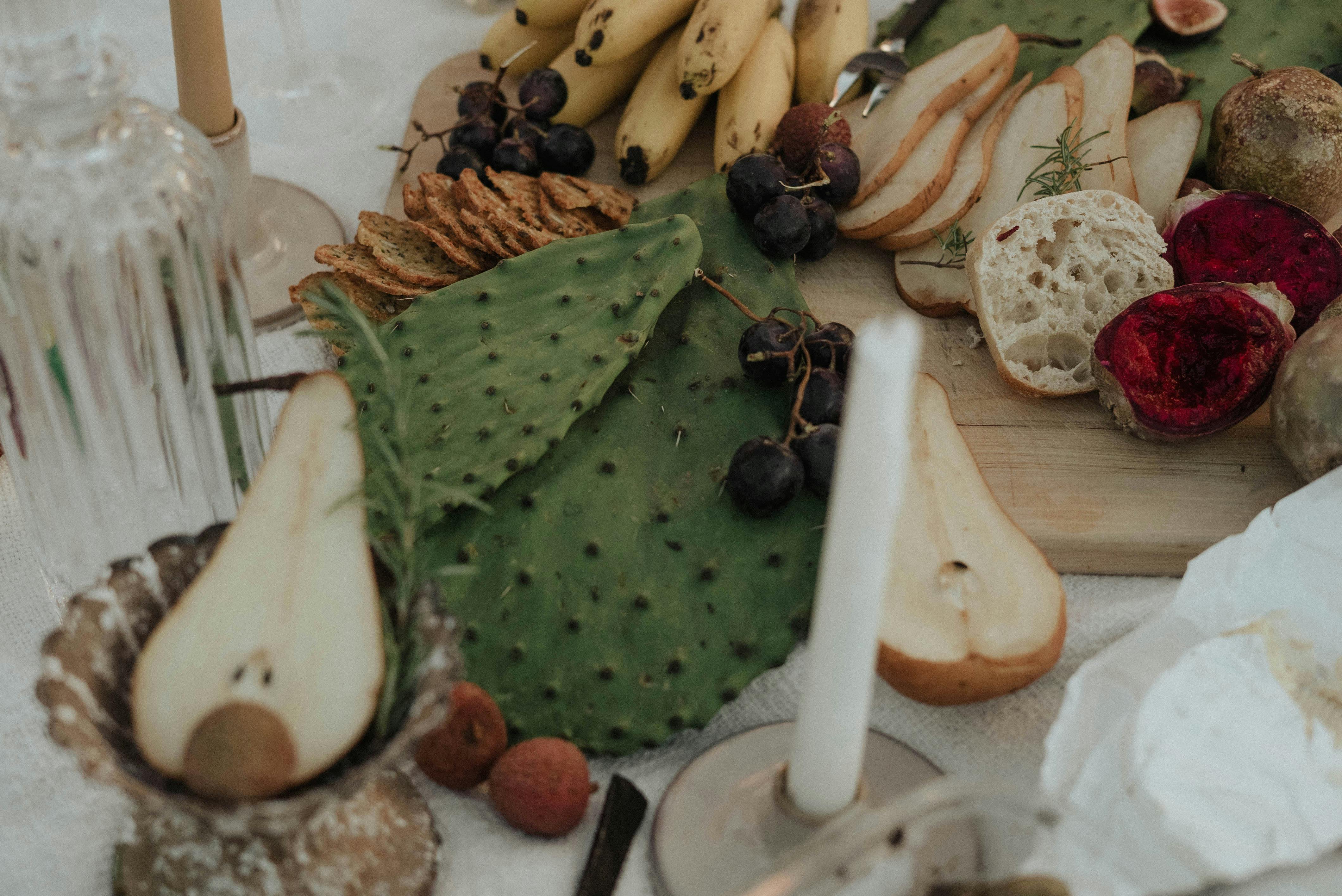Dragon fruit cactus, also known as pitaya or strawberry pear cactus, is a species of the night blooming cactus family native to Central and South America. These plants are easy to care for and make a beautiful addition to any home or garden. In this article, we will discuss how to take care of a dragon fruit cactus. With the right tips and tricks, you can keep your dragon fruit cactus healthy, happy, and blooming for years to come.A Dragon Fruit Cactus is a type of cactus that is native to Central America and Mexico. It is also known by its scientific name, Hylocereus undatus. The plant has long, vining stems with large, spiny leaves and edible fruit. The fruit itself is oval in shape and has a leathery skin with bright pink or yellow flesh inside. It has a sweet flavor and contains numerous small seeds. Dragon Fruit Cacti are often grown as ornamental plants in homes and gardens due to their striking appearance.
Where to Plant Dragon Fruit Cactus?
Dragon fruit cactus is a popular, easy to grow cactus that produces an edible fruit. It is native to Mexico, Central America, and the Caribbean, but can be grown in many different climates. When deciding where to plant dragon fruit cactus, there are a few things to consider.
First, dragon fruit cactus prefers warm climates with plenty of sunlight. The ideal temperature range for optimal growth is between 70-90°F (21-32°C). If you live in an area with cooler temperatures, make sure you locate your plant in a sunny spot that provides at least 8 hours of direct sunlight each day.
Second, dragon fruit cactus should be planted in well-draining soil. Cacti need well-draining soil because they can easily succumb to root rot if left sitting in water. Soil that is too sandy can also be detrimental as it won’t hold enough water or nutrients for the plant’s needs. Look for a soil mix that contains equal parts sand and loam with some organic matter mixed in for added nutrition.
Third, dragon fruit cactus should be planted in a container or raised bed that allows for proper drainage and air circulation. Containers should have several drainage holes at the bottom and raised beds should have a layer of gravel at the bottom to ensure proper drainage. It’s also important to provide adequate air flow around the plant so it doesn’t become overcrowded or prone to disease.
Finally, when planting dragon fruit cactus it’s important to keep them away from areas that receive strong wind gusts as this can cause damage to the plant and knock off any flowers or fruits it may have produced. It’s also important not to place your plants too close together as this can lead to competition for resources like light and water.
Overall, when deciding where to plant dragon fruit cactus there are a few things you need to consider such as climate preference, soil type and drainage needs; container type; and proximity of other plants. Keep these factors in mind when planning your planting location and you will be sure to get the most out of your new dragon fruit cacti!
How Much Sun Does a Dragon Fruit Cactus Need?
Dragon fruit cacti, also known as pitaya, are native to Central and South America. These cacti prefer warm climates and need plenty of sunlight to thrive. The amount of sun they require depends on the variety of dragon fruit cactus and the climate in which they are being grown. In general, dragon fruit cacti should be exposed to at least six hours of direct sunlight each day for optimal growth.
In climates that are consistently hot and sunny, dragon fruit cacti may require more than six hours of direct sunlight each day. In these cases, it is best to place the plant in a shaded area or provide it with some kind of cover during the hottest periods of the day to protect it from burning or drying out.
In climates that have cooler temperatures and less intense sunlight, dragon fruit cacti may not need as much sun as those grown in hotter climates. In these cases, four to five hours of direct sunlight each day should be sufficient for optimal growth.
It is important to note that too much sun can be just as damaging for dragon fruit cacti as too little sun. These plants can easily burn or dry out if they are overexposed to direct sunlight for extended periods of time. It is best to monitor your dragon fruit cactus carefully when first planting it so you can adjust its exposure accordingly.
Overall, dragon fruit cacti need plenty of sunlight in order to thrive and produce an abundance of delicious fruits! The amount of sun required depends on the variety and climate in which you are growing your plant, but in general six hours per day should be sufficient for healthy growth.
Dragon Fruit Cactus Watering Requirements
Dragon fruit cactus, also known as pitaya or Hylocereus, is a tropical cactus native to Mexico and Central America. It produces large, sweet-tasting fruits that are rich in antioxidants and vitamins. To ensure a healthy and productive plant, it is important to provide the appropriate amount of water to the dragon fruit cactus.
Watering requirements for the dragon fruit cactus vary according to the climate and soil type in which it is growing. In general, dragon fruit cacti prefer a well-draining soil that is kept slightly moist but not soggy. During the growing season (spring through summer), water your dragon fruit cactus once a week, making sure not to over-water. During the winter months, reduce watering frequency to about once every two weeks or when the top inch of soil feels dry.
It’s important to note that too much water can be just as damaging as too little water for this type of plant. If you find that your dragon fruit cactus is getting too much water, reduce watering frequency or adjust your watering technique accordingly. Additionally, make sure not to leave standing water around the base of your plant as this can cause root rot.
Overall, adequate watering will ensure that your dragon fruit cactus stays healthy and produces plenty of delicious fruits throughout the year!
Fertilizing Requirements for Dragon Fruit Cactus
Dragon fruit cactus is an exotic plant that is becoming popular in the home garden due to its low maintenance requirements and striking appearance. It is important to ensure adequate fertilization for optimal growth and health of your dragon fruit cactus. Fertilizing dragon fruit cactus should be done at least once per year, preferably in the spring or summer months when the plant is actively growing. A balanced fertilizer formulated for cacti and succulents should be applied at a rate of half strength every two to four weeks during this time period. It is important not to over-fertilize, as this can lead to salt build up in the soil, which can damage the roots of your plant. Additionally, you should avoid fertilizers with high nitrogen content as this can cause excessive vegetative growth and reduce blooming. If your dragon fruit cactus does not show any signs of nutrient deficiency such as yellowing or weak stems, you may not need to fertilize it at all.
It is also important to maintain good soil drainage when growing dragon fruit cacti. These plants prefer well-draining sandy soils with a pH between 6 and 8. If your soil does not have these characteristics, you should consider amending it with sand or other amendments to improve drainage before planting your dragon fruit cactus. Additionally, it is important to water your dragon fruit cactus regularly but not too frequently; these plants prefer soils that are allowed to dry out between waterings. Once established in its new environment, your dragon fruit cactus should require minimal care and will reward you with vibrant blooms throughout the growing season.

Pruning Tips for Dragon Fruit Cactus
Pruning is an important part of caring for dragon fruit cactus. Pruning can help the cactus to grow in a healthy and attractive shape, as well as removing any dead or damaged stems. Pruning should be done regularly and carefully to ensure that the cactus remains healthy. Here are some tips for pruning dragon fruit cactus:
First, it is important to make sure that all tools used for pruning are sharp and clean. This will reduce the risk of infection or damage to the plant. When pruning, be sure to cut back any stems that are dead, diseased, or damaged. These stems should be removed completely from the plant in order to prevent further damage.
It is also important to remove any stems that are too long or out of proportion with the rest of the plant. Longer stems can become entangled with other plants and cause damage if left unchecked. Stems that are out of proportion with the rest of the plant may also not receive adequate sunlight or nutrients, so it is important to maintain a balanced shape.
When pruning dragon fruit cactus, it is important to make sure that only healthy stems are left behind. Be sure to remove any discolored or damaged leaves as well as any dead roots before trimming off any excess length from healthy stems. This will help ensure that only healthy growth remains on the plant.
Finally, it is important to fertilize dragon fruit cacti regularly in order to promote healthy growth and prevent disease. Fertilizers should be applied according to package instructions in order for them to be most effective. Regular fertilization will help ensure that your dragon fruit cactus stays healthy and grows strong!
Common Pests and Diseases of Dragon Fruit Cactus
Dragon Fruit Cactus are susceptible to several pests and diseases that can cause damage to the plant. The most common pests and diseases of Dragon Fruit Cactus include mealybugs, aphids, whiteflies, scale insects, mites, fungus gnats, root rot, and powdery mildew.
Mealybugs are small white insects that feed on the sap of the cactus. They can cause damage to the stems and leaves of the plant. To control mealybugs, use an insecticide or insecticidal soap to kill them.
Aphids are small green or black insects that feed on the sap of the cactus. They can cause distorted growth on the plant as well as yellowing of leaves. To control aphids, use an insecticide or insecticidal soap to kill them.
Whiteflies are tiny white flying insects that feed on the sap of the cactus. They can cause yellowing and wilting of leaves as well as distorted growth on the plant. To control whiteflies, use a pesticide or pesticide-based product to kill them.
Scale insects are small insects that feed on the sap of the cactus. They can cause stunted growth on the plant as well as yellowing and wilting of leaves. To control scale insects, use an insecticide or insecticidal soap to kill them.
Mites are tiny spider-like pests that feed on the sap of the cactus. They can cause distorted growth on plants as well as yellowing and wilting of leaves. To control mites, use a pesticide or pesticide-based product to kill them.
Fungus gnats are small black flies that feed on decaying organic matter in soil around plants such as dragon fruit cacti. They can cause root rot if left unchecked which causes stunted growth in plants and wilting leaves due to lack of water absorption by roots in soil with high levels of fungus gnat larvae present in it . To control fungus gnats, use a fungicide or nematode-based product to kill them .
Root rot is a fungal disease caused by overwatering plants which leads to soggy soil which is perfect for fungi and bacteria to grow in which causes root decay leading to stunted growth in plants and wilting leaves due to lack of water absorption by roots in soil with high levels of fungi present in it . To prevent root rot from occurring , make sure you water your dragon fruit cacti only when necessary depending upon its current stage of growth .
Powdery mildew is a fungal disease caused by humid weather conditions which leads to white spots appearing all over plant foliage along with some yellowing due too poor photosynthesis happening because light cannot reach affected areas properly . To prevent powdery mildew from occurring , try keeping humidity levels low near your dragon fruit cacti by using fans or air conditioners if possible .
It is important for growers to be aware these common pests and diseases so they can take steps early on before any significant damage occurs . By using preventive measures such as proper watering , pest management treatments , and good air circulation , growers can ensure their Dragon Fruit Cacti stay healthy throughout their life cycle
Harvesting Dragon Fruit Cactus
Dragon fruit cactus can be harvested when the fruit is fully ripe. The fruit will be soft to the touch and will have a deep, reddish-purple color. The best way to harvest dragon fruit cactus is by cutting the stem with a sharp knife, just below the fruit. Make sure to wear gloves when harvesting, as the sap from the stems can irritate skin. It is also important to be gentle when handling the fruits, as they can easily bruise or become damaged if mishandled.
Storing Dragon Fruit Cactus
Once harvested, dragon fruit cactus should be stored in an airtight container in a cool, dark place. To keep them lasting longer, it is best to store them at temperatures between 45-55 degrees Fahrenheit (7-13 degrees Celsius). If storing in the refrigerator, wrap each piece of fruit individually in plastic wrap before placing in an airtight container or plastic bag. Unripe dragon fruits should be stored at room temperature and away from direct light until they are ripe enough to eat.

Conclusion
Dragon fruit cactus is a low maintenance plant that is perfect for those who don’t have a lot of time to care for their plants. It requires full sunlight, good air circulation and regular watering. It also does well in light shade. When pruning and repotting the dragon fruit cactus, be sure to use gloves and wear protective clothing to avoid any cuts or scratches. Fertilizer should be applied once every two weeks to keep the plant healthy and strong. The dragon fruit cactus can also be propagated by dividing the stems or using stem cuttings. With proper care, this beautiful plant will reward its owners with delicious fruits and lovely flowers!
With these tips, anyone can easily take care of a dragon fruit cactus without any hassles. A little bit of knowledge on how to care for it will go a long way in ensuring that it grows healthy and strong. Don’t forget to enjoy this unique looking cactus in your home or garden!



